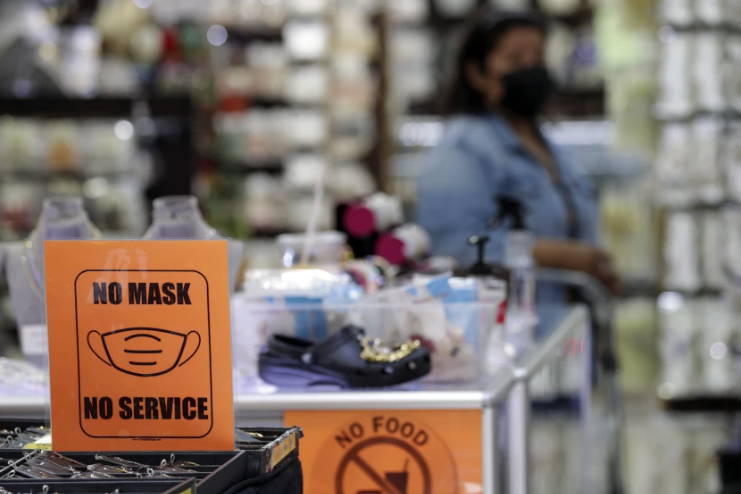New coronavirus infections in parts of California may be surging even higher than winter’s Omicron wave, potentially explaining why so many people seem to be infected simultaneously.
The concentration of coronavirus levels in San Francisco’s wastewater is at even higher levels than during the winter, according to data tweeted by Marlene Wolfe, an assistant professor in environmental health at Emory University.
Wastewater data for much of L.A. County — Los Angeles city and a wide swath of eastern and southern L.A. County — have been unavailable due to a supply chain shortage on testing supplies at the state level.
However, in the Las Virgenes Municipal Water District that serves areas in and around Calabasas, “you can see a steady increase in wastewater viral concentrations since the second week of June,” Los Angeles County Public Health Director Barbara Ferrer said during a briefing last week.
And since late last month, a steeper increase has been noted at the L.A. County Sanitation Districts’ treatment plant in Lancaster.
“Examining viral load in wastewater provides a promising way to supplement testing data and strengthen surveillance so we can better understand levels of community transmission,” Ferrer said.
The wastewater data suggest many infections aren’t being recorded in officially reported coronavirus case counts. That is because so many people are using at-home over-the-counter tests, which can be more convenient than getting tested at a medical facility, where results are reported to the government.
“When you look at the [coronavirus] case counts, they’re no longer reliable. There are tremendous undercounts,” Dr. Robert Wachter, chair of the UC San Francisco Department of Medicine, said at a campus town hall Friday. “And the number of cases now probably is not all that dissimilar to what we saw during the massive surge in December and January.”
Hear from Dr. Santiago why COVID-19 vaccines are important to get even if you’re healthy.
At UC San Francisco’s hospitals, 5.7% of asymptomatic patients are testing positive for the coronavirus, meaning 1 in 18 people who feel fine nonetheless have the coronavirus. In other words, in a group of 100 people, there’s a 99.7% chance that someone there has the coronavirus and is potentially contagious. “Think about that the next time you go into a crowded bar or or get onto an airplane with 100 people,” Wachter said.
“I kind of wish the flight attendants would hold up a sign that says, ‘I can guarantee to you that someone on this plane has COVID,’ ” he said. “I think the rate of mask wearing would go up quite a bit.”
The spread of illness caused UC Irvine on Monday to renew a mask mandate inside campus buildings, following the lead of other campuses such as UC Riverside and UCLA and school systems like San Diego Unified. In addition, the film industry has recently begun to require masking on film sets again around Los Angeles.
L.A. County is prepared to reinstate a universal mask mandate in indoor public spaces for those 2 and older as early as July 29 if the rate of new coronavirus-positive hospitalizations does not improve. Weekly COVID-19 deaths in L.A. County have doubled in the last month, from 50 to 100 deaths per week. During the fall-and-winter Omicron surge, weekly deaths peaked at more than 500 a week.
Source: LA Times
